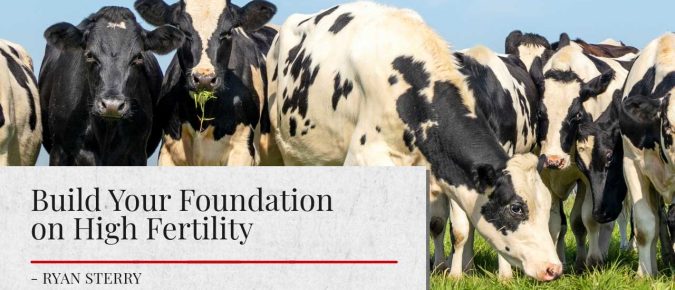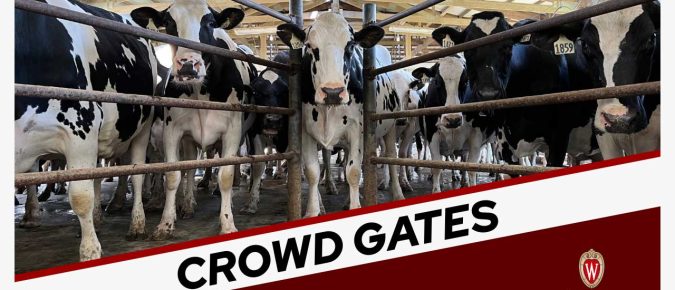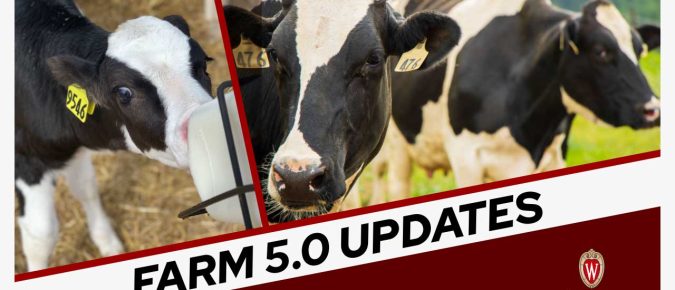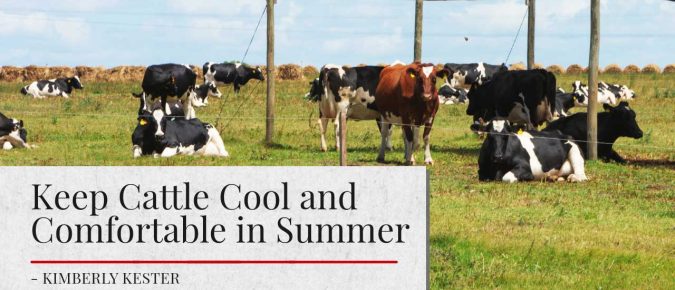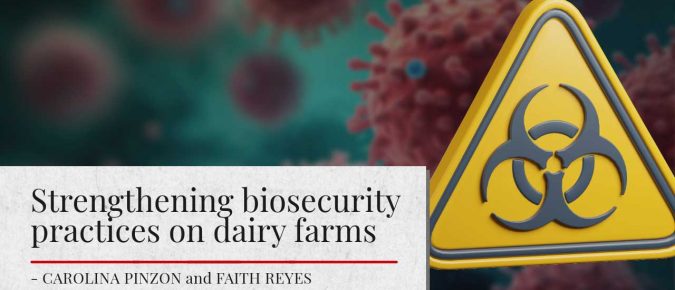Articles
Build Your Foundation on High Fertility
Today, we can form our own pyramid of characteristics for high performing dairy herd reproductive management. During a recap of the 2024 Reproduction Roadshow, Dr. Paul Fricke, Dairy Cattle Reproduction Specialist for UW-Madison and Division of Extension, introduced his building blocks for top reproductive performance and how achieving each step opens more opportunities to use additional reproductive technologies.
▶️ Watch: Leveraging digital technologies to improve management decisions in dairy farms
In this episode of Badger Dairy Insight, we hear from Dr. João Dórea, an assistant professor in Precision Agriculture and Data Analytics in the Department of Animal and Dairy Sciences at UW–Madison.
Crowd gates done right: Best practices for cow comfort and welfare
Proper crowd gate functioning benefits both cows and dairy farm workers. For farm managers, effective staff training, regular crowd gate maintenance, and proper management are essential for ensuring successful crowd gate operation. While crowd gates help keep cows near the parlor entrance, it is crucial to avoid misusing them to promote positive animal welfare.
Top strategies to streamline your milking parlor
Ensuring a comfortable and safe parlor environment for both cows and workers, while efficiently using all available resources—including time—is crucial for the dairy business’ profitability. Milking time on a dairy farm is a balancing act between maintaining cleanliness and calmness while moving quickly enough to finish on time and get the cows back to their pens, where they can eat, drink, rest, and produce milk.
▶️ Watch: Updating our thinking about corn silage and alternative forages
Jennifer Van Os discusses collaborative work at UW-Madison to identify practical strategies for alleviating heat stress in hutch-housed dairy calves.
FARM 5.0 updates (Farmers Assuring Responsible Management)
The Farmers Assuring Responsible Management (FARM) Animal Care program helps American dairy farms demonstrate their dedication to providing high quality animal care.
Keep Cattle Cool and Comfortable in Summer
The latest long-range forecasts from the National Weather Service show that Wisconsin has a 40% to 50% chance of a hotter-than-normal summer. Long periods of heat stress are more likely to have lasting effects on cattle, including early embryonic loss in heifers and cows, poor semen quality in bulls, and reduced gains in feeder cattle.
Strengthening biosecurity practices on dairy farms
The careful implementation of biosecurity practices is key to protect both people and animals, as well as to ensure a viable and safe food supply for consumers.
▶️ Watch: Strategies for keeping calves cool in hutches
Jennifer Van Os discusses collaborative work at UW-Madison to identify practical strategies for alleviating heat stress in hutch-housed dairy calves.
▶️ Watch: Understanding the carryover effects of early life heat stress on dairy calves
his presentation will explore how heat stress affects the physiological, behavioral, and developmental aspects of calves during their critical early stages of life and highlight the long-lasting implications that persist into adulthood.
Mooving Cows: Learn basic cow handling skills to stay safe and keep cows calm
Mooving Cows™ is an educational game where you can practice moving cows around a dairy farm. Learn about cow behavior and practice basic cow handling skills to stay safe and keep cows calm.
Am I required to test for HPAI (H5N1) before transporting my cattle?
The Federal order regarding the HPAI (H5N1) virus situation requires testing for specific interstate (across state lines) travel of lactating dairy cattle. Read about different scenarios to assist farmers with understanding the Federal order.

